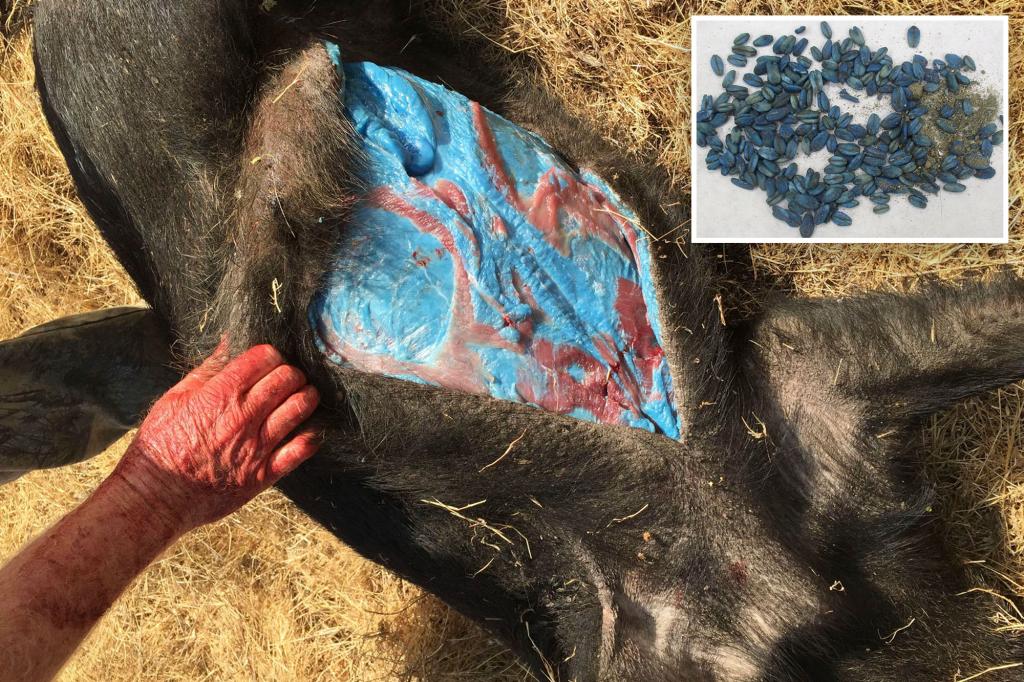Swarms of wild pigs in California developed blue flesh after ingesting pesticides containing rat poison — and officials warned other common game animals may also be infected.
The feral hogs in Monterey County were exposed to a type of pesticide bait containing the anticoagulant rodenticide Diphacinone, a type of rat poison that prevents blood clotting and forces internal bleeding, the California Department of Fish and Wildlife said.
The swine could’ve accidentally consumed the pesticide via dyed bait or even other prey that might’ve already been infected with it.
The California wild pigs, a hybrid between domestic swine and feral boars, are omnivores that feed on anything from grass to other bits of animal matter, including mice, according to the CDFW.
Any animal, from the pigs to geese and even bears, could be infected, according to the CDFW.
The department noted that it first received reports of the pigs’ bizarre intestinal discoloration in March, but noted that not all contaminated pigs have the glaring blue innards, especially depending on when they consumed the pesticide.
“It’s wild. I’m not talking about a little blue. I’m talking about neon blue, blueberry blue,” Dan Burton, owner of Urban Trapping Wildlife Control, who first reported the oddly coloured flesh, told The Los Angeles Times.
The wild pigs are present in 56 of California’s 58 counties, according to the CDFW.
A 2018 study by the University of Nebraska found that the rat poison residue was present in over 8 percent of the wild pig tissue samples collected from populations near agricultural and residential areas that used pesticides or rodenticides.
In the same study, a staggering 83 percent of bear tissue collected was also contaminated by the poison.
Pesticides used outdoors often create runoff after excessive rainfall or poor application and trickle into nearby bodies of water. It primarily infects aquatic life first, but the domino effect only continues as predators that consume the fish spread the chemicals through the food chain.
Read the full article here


